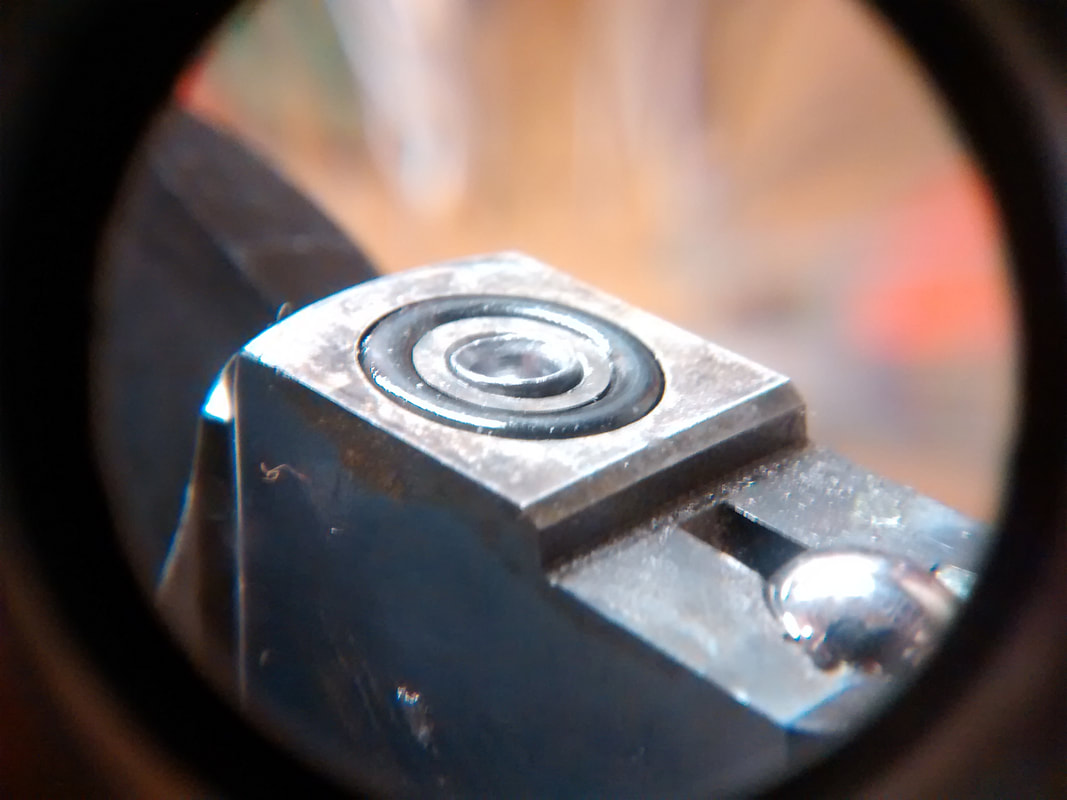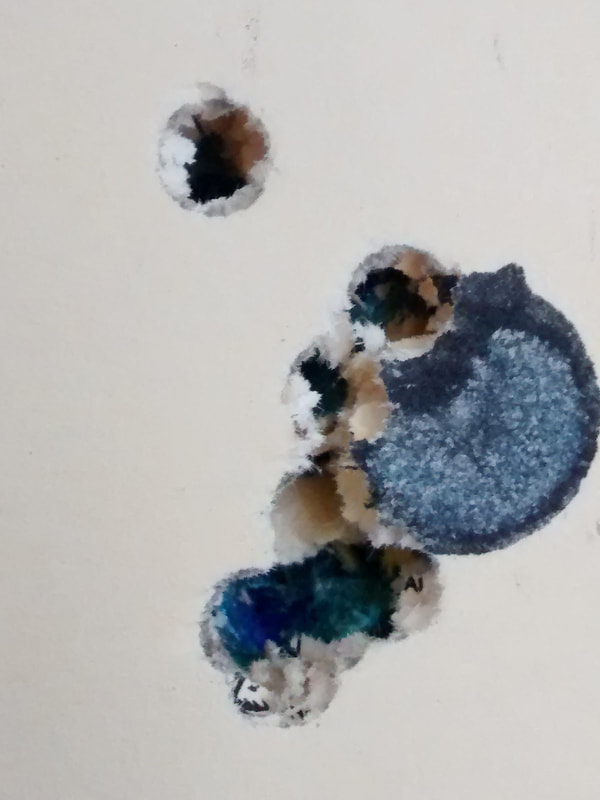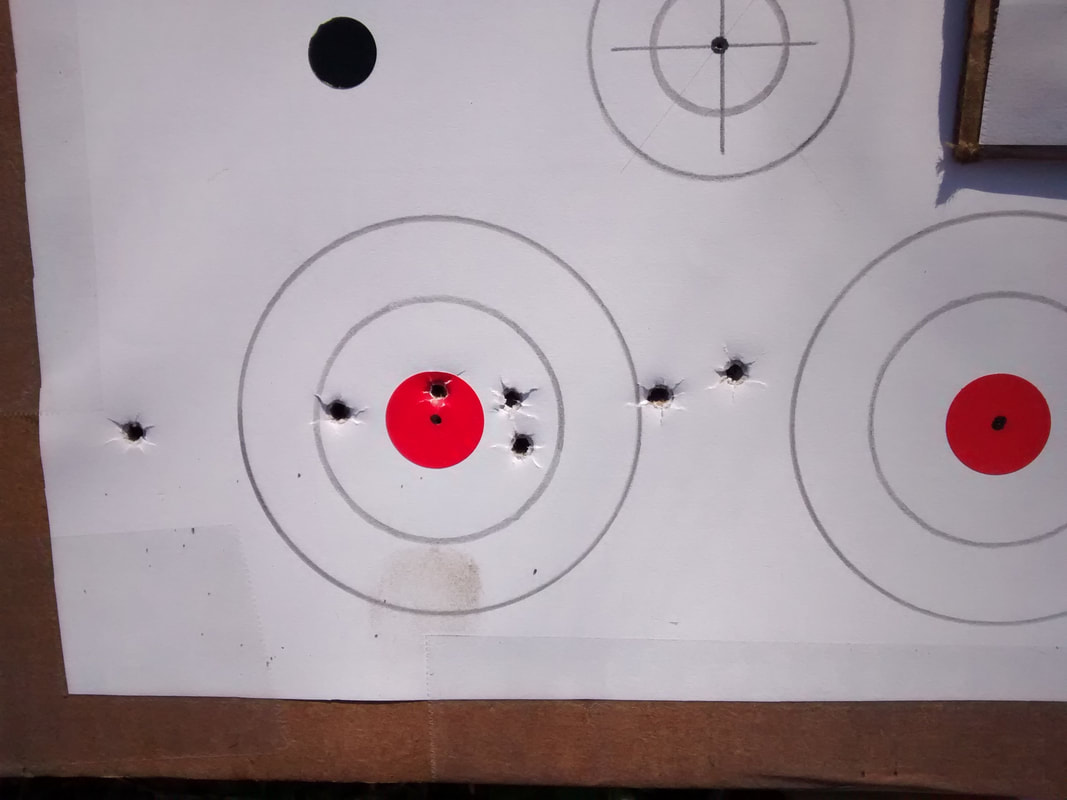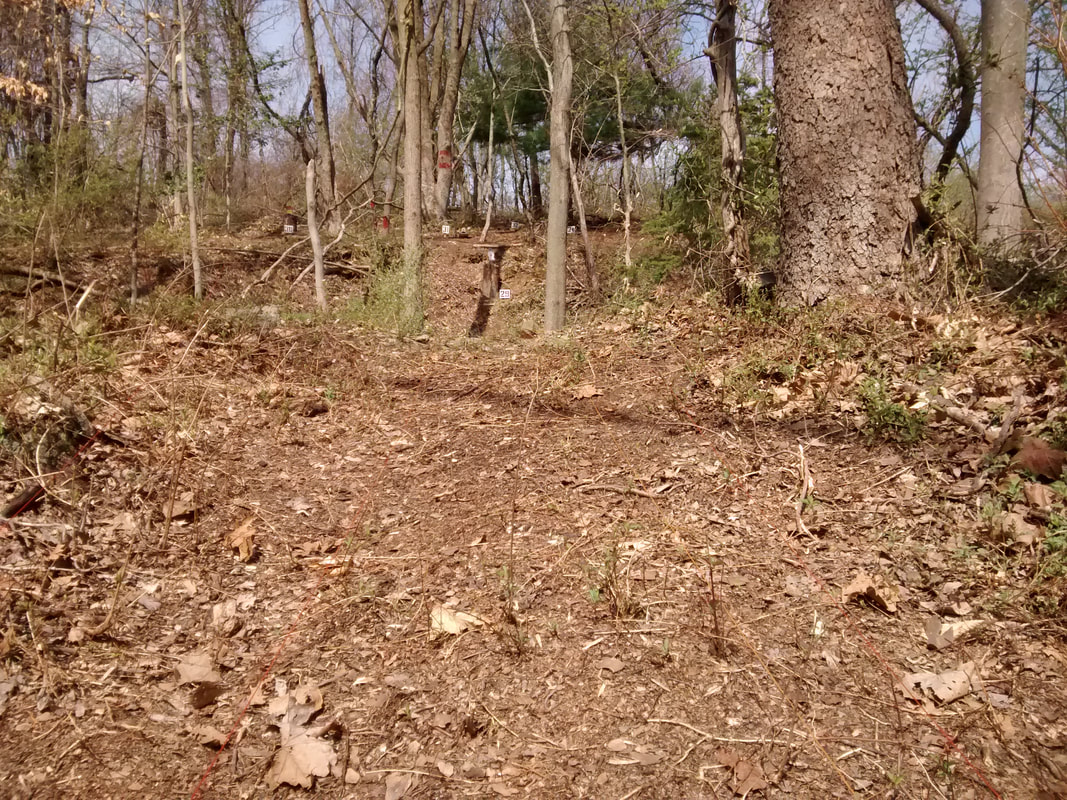With the first visit to Germany and then the preparation for the IWA show, plus the work on the Stormrider the idea of getting a brand new N-Tec powered DIANA and testing it side by side with other piston airguns in the frigid temperatures of Winter, had to wait for a better timing.
Above all, there is little sense in testing new guns. You need to properly "run-in" the machines and then test them.
After some solid conversations and a specific set of objectives, DIANA agreed to facilitate the gun for the test, a Mauser AM03 in 0.22" cal. because one of the guns in the winter comparison was going to be the N-Tec converted D34k in 0.20" cal. and it seemed "fairer" to compare a 0.22" to a 0.20" than to a 0.177" rifle.
The first thing I did after receiving the gun was to stand her on its muzzle for a week (still in the box).
Why?
Because we all need to remember that Gas Springs (GS) ARE internally lubricated, and that most GS's hold their lubricant in the large end (the compression chamber end). If the gun is set down on it's butt, then the lubricant will flow BACK AWAY from where it is needed most (the junction between the compression chamber and the gas spring piston). NOTHING kills a GS faster than running it with an unlubed stem.
After the gun had been standing "upside down" for a week, I took it apart, cleaned everything and lubed the stem externally a bit with Ultimox Oil. Then the gun was put together again.
After that, the gun was cocked and de-cocked 50 times.
After that, we could start the process of tuning.
Of course, it being a GS, as opposed to a RAM (RAMs are adjustable by definition), the tuning cannot act on the spring force/energy, you have what you have and you need to deal with it.
But there are other ways you can help the gun perform its utmost with the pellet that the barrel seems to like best.
Peculiarly, after extensive tests, we found that the barrel itself seemed to like the JSB/GTO's when lubed with T-9 (Boeshield).
At 11.75 grs, they are not a lightweight pellet for the powerplant and though they are light-for caliber, they do have a reasonable BC and can reach well out into the 50'ish yards.
Muzzle energies went from a low of 14.1 Ft-lbs (Crosman Premiers 14.3's), to a high of 19.1 ft-lbs with the GTO's
Interestingly enough, the JSB Monsters (25.4 gr.) produced slightly better energy readings than the Crosman Premier (14.7 vs 14.1 ft-lbs). A good compromise for those that do not like the non-lead ammunition might be the JSB's JUMBO's; with the Heavies (18 grs) the gun made 17.9 ft-lbs, and with the original Jumbo's (16 grs) it made 18.5 ft-lbs.
So, the gun itself was showing some very interesting potential. Moreso because the GTO's shot (855 fps) very close to what I consider the maximum stability limit speed for diabolo shaped pellets (875 fps), and so there was a marked advantage in the trajectory of the GTO's over the JSB Jumbo Heavies (669 fps)
Initial tests with the GTO's had been disconcerting, a few pellets would shoot one on top of another, but there would be flyers, and so we started the process of mating the pellet to the rifle.
The first thing we discovered was that the chamber was not too good for the GTO's:
Once that was done, the next aspect was to tune the rear stock/action screw.
The Mauser AM03 is still, basically, a DIANA 34 and, in the same way, it responds well to the tuning of the rear stock to action screw.
The methodology is simple: You tighten the front screws (one on each side) to about 25 in-lbs.
You get out some targets, a lot of pellets, you set up at around 20 yards, and you snug down the rear stock/action screw (start at around 10 in-lbs).
You then shoot a group and annotate your target.
You tighten the rear stock/action screw ½ a turn and shoot another group.
You then repeat the process till you are, at most, around 25 in-lbs
Looking back at your targets should tell you where you were in the "sweet spot".
You go back and you refine the process turning the screw by ¼ turns. Once you find that, you use your torque wrench to see where you were and repeat to confirm.
Now, you're done.
You can back out to 35 yards and shoot some groups:
Originally I had planned to shoot the course following loosely UKHFT rules (I would shoot sitting down because it is a perfectly usable position in our lands/terrains, and I would be shooting high power), but I had planned on not touching the scope, so the scope had been set to around 9X (it is a 5-25X FFP scope) with an MOA reticle and I had my "cheat sheet" printed for "bracketing". Alas, my plans were not to be, but we will come back to that later.
So, at 05:30 on Sunday I started my trip to Delaware County and enjoyed the dawn on the road.
Driving the little Golf TDI is a pleasure and the 2½ hrs drive were amusing and refreshing.
After arriving, it was heartwarming to be received by all the old friends, and after some polite, but quick updating, we were off to the sighting-in lanes.
Doug Bruestle has done a terrific job rescuing the "Original Field Course" from oblivion. As has Mike Harris with the setting up of the new "AAFTA/Hawk's Valley" course at Delaware Field and Stream.
The course is well laid, challenging and in no way a walk in the park. You can read the official report here.
At the sighting in I started with some windage problems (that should have alerted me to the impending storm), but when things settled down I was quite happy
As Doug has written, a 27 Troyer is not an easy course.
And the one shot per target aspect is extremely important for the future of FT. Yes it is a lot of work, but it also pays back in the excellence that needs to be achieved.
As for me, personally, the match was going well until something went out of whack. It wasn't the scope nor the bases. After a pretty bad showing in two lanes, I took time out and checked my stock screws. Completely loose.
I tightened them, but I needed to sacrifice a few shots to get to see where I was hitting, after finding out I was hitting 2 full MOA's to the right, I was able to connect with a few more targets. I had hoped to shoot the whole match without touching the scope, but I had to raise the magnification to see what was happening.
Upon later inspection I found out that with all the excitement of the new gun, I had forgotten to loc-tite the screws and change the washers of the two front ones. Grave mistake that costed me lots of lost points, BUT, that is what FT is all about:
You address the lane and you take your best shot at each target. No if's, and's, but's or alibi's. No "mulligans".
This is the challenge and this is what makes it so interesting.
And of course, the people that shoot FT are special people. It's always a pleasure and a privilege to share a day in the course with them.
Big thanks to Doug and Mike for what they are doing for DCFS and for FT. And a great big thanks to ALL MD's because without them we wouldn't have no sandbox to play in!
I will now proceed with the remainder of the work on the Mauser, and after I receive the left hand actions for the Stormrider, I will resume the work with that little carbine.
Thanks for reading, keep well and shoot straight!
HM






















 RSS Feed
RSS Feed